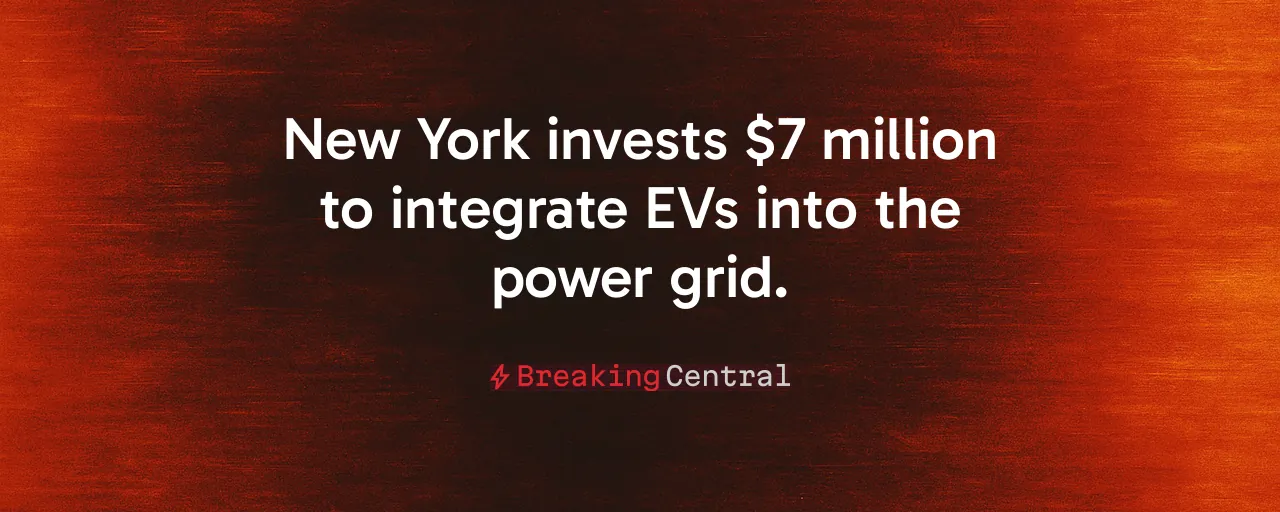A Bold Plan Hits the Grid
New York State is charging full speed into electric vehicles. Governor Kathy Hochul recently unveiled $7 million in funding to integrate EVs into the power grid. This includes $3 million for three projects to test technologies like bi-directional charging and managed charging software, plus $4 million to tackle utility data challenges. The goal? Shift EV charging to off-peak times, ease grid strain, and lower costs. It sounds promising, but the plan raises questions about cost, reliability, and choice for everyday New Yorkers.
The state's vision is ambitious. By 2035, all new passenger cars and trucks sold are set to be zero-emission. By 2040, the electric system aims for net-zero emissions. These mandates, backed by the Climate Leadership and Community Protection Act, are reshaping transportation and energy. The push for EVs comes at a time when the grid is already stretched, especially during winter peaks. For many, the debate centers on the effectiveness of this top-down approach to achieving clean energy goals.
The Cost of Mandates
New York's EV plan leans heavily on public funds. The $7 million announced is just a sliver of the nearly $3 billion earmarked for transportation electrification. These dollars flow through programs like the Clean Energy Fund and NYSERDA's Grid Modernization, which has already spent $65 million since 2016. While proponents argue this spurs innovation, critics point out that taxpayers and ratepayers foot the bill. Empire Center analyses show that utility upgrades for EV charging often get baked into higher electricity rates, hitting rural and low-income households hardest.
Grid reliability is another concern. Department of Energy models project a 30 to 50 percent spike in peak load if EV adoption accelerates without careful management. In upstate regions, where charging stations are sparse, drivers already face long waits at fast chargers. Winter storms, which can cripple power delivery, only heighten the stakes. Forcing EVs onto a grid that's not ready risks blackouts and skyrocketing costs, undermining the very goals the state hopes to achieve.
Innovation Needs Freedom
The state's focus on EV-specific technologies, like lamppost chargers and fleet interconnections, is narrow. Projects like Voltpost's $775,000 grant to retrofit lampposts in New York City or Weave Grid's $1 million to optimize charging schedules show promise. But why limit innovation to EVs? A market-driven approach would reward any technology that cuts emissions, whether it's hydrogen, synthetic fuels, or advanced hybrids. Broad tax credits for low-carbon solutions could spark competition and drive costs down without picking winners.
Historical efforts back this up. When New York launched Charge NY in 2013, it offered flexible incentives that spurred private investment. Today, rigid mandates risk stifling creativity. Permitting new natural gas or nuclear plants, which provide reliable baseload power, could also stabilize the grid as renewables grow. Instead of subsidizing EV chargers, dynamic pricing, where rates reflect real-time demand, would encourage off-peak charging naturally, letting consumers make informed choices.
Preserving Consumer Choice
New York's mandates limit options. By 2035, internal-combustion vehicles will vanish from showrooms, making EVs the primary choice for drivers. This hits hard in rural areas, where charging infrastructure lags and long-distance travel is common. Resale values for gas-powered cars are already dropping, creating financial uncertainty for owners. A one-size-fits-all policy ignores the diverse needs of New Yorkers, from upstate farmers to urban commuters.
There's a better way. Performance-based rebates tied to emissions reductions, not vehicle type, would give consumers flexibility. Community-owned charging co-ops could expand access in rural counties, balancing urban-heavy deployments. Transparent cost-tracking would ensure ratepayers aren't subsidizing chargers they don't use. These steps empower individuals, not bureaucrats, to shape the energy future.
A Smarter Path Ahead
New York's EV push has noble aims, but its heavy-handed approach risks unintended consequences. The $7 million in funding highlights a willingness to innovate, yet the reliance on mandates and subsidies raises red flags. A grid that's reliable, affordable, and flexible requires policies that prioritize competition and choice over rigid targets.
Market-driven solutions offer a blueprint. Broader incentives, streamlined permitting for diverse energy sources, and dynamic pricing can deliver clean energy without sacrificing reliability or fairness. By focusing on outcomes: lower emissions, stable power, fair costs, New York can build an energy system that benefits all its citizens.
The road to a cleaner future doesn't need to be paved with mandates. Empowering innovators and consumers to find the best solutions will keep New York's lights on and its drivers in the driver's seat. That's a vision worth powering up.
